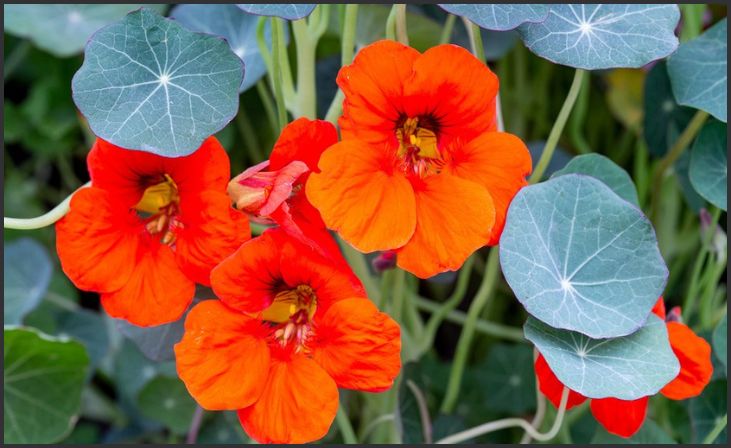Companion planting is an age-old gardening technique where plants are grown together to enhance each other’s growth and repel pests. Rosemary (Rosmarinus officinalis), a fragrant herb, is an excellent addition to any garden due to its pest-repellent properties. This blog will explore the best companion plants to grow alongside rosemary to maximize its pest-repelling benefits.
1. Basil

Basil (Ocimum basilicum) is not only a culinary delight but also a powerful companion plant. When planted near rosemary, basil can repel mosquitoes, flies, and thrips. The strong scent of basil confuses pests and reduces the likelihood of infestations. Additionally, basil and rosemary have similar growing requirements, making them ideal companions in both herb gardens and vegetable patches.
2. Sage
Sage (Salvia officinalis) is another aromatic herb that pairs well with rosemary. Sage is known to deter cabbage moths, carrot flies, and beetles, making it an excellent companion for vegetables like cabbage, carrots, and beans. The combination of rosemary and sage can create a robust aromatic barrier that confuses pests and keeps your garden healthy.
3. Thyme
Thyme (Thymus vulgaris) is a low-growing herb that complements rosemary both visually and functionally. Thyme helps repel a variety of pests, including whiteflies, cabbage loopers, and corn earworms. This herb’s ability to attract beneficial insects like bees and predatory wasps also contributes to a healthier garden ecosystem. Plant thyme near rosemary to enhance its pest-repellent capabilities and enjoy a fragrant herb garden.
4. Oregano

Oregano (Origanum vulgare) is a hardy herb that thrives alongside rosemary. Known for its strong scent, oregano can repel pests like aphids, spider mites, and cucumber beetles. The combination of oregano and rosemary can help protect nearby plants, such as tomatoes, peppers, and squash, from pest damage. Additionally, both herbs are drought-tolerant and prefer well-drained soil, making them excellent companions.
5. Marigolds
Marigolds (Tagetes spp.) are vibrant flowering plants that add a splash of color to any garden. Beyond their aesthetic appeal, marigolds are renowned for their pest-repellent properties. They can deter nematodes, aphids, and whiteflies, making them a valuable ally for rosemary. Plant marigolds around the perimeter of your garden or intersperse them with rosemary to create a beautiful and pest-free environment.
6. Lavender
Lavender (Lavandula spp.) is a fragrant herb that shares many of the same growing conditions as rosemary. Both plants thrive in well-drained soil and full sun. Lavender’s strong scent helps repel moths, fleas, and mosquitoes, while also attracting beneficial pollinators like bees and butterflies. The combination of rosemary and lavender can create a fragrant and pest-resistant border in your garden.
7. Chives
Chives (Allium schoenoprasum) are a versatile herb that can deter a range of pests, including aphids, Japanese beetles, and carrot rust flies. Their pungent aroma confuses pests and reduces the likelihood of infestations. Chives also attract beneficial insects such as ladybugs and parasitic wasps, which can help control pest populations. Plant chives near rosemary to enhance its pest-repelling properties and enjoy a steady supply of fresh herbs.
8. Nasturtiums

Nasturtiums (Tropaeolum majus) are cheerful, trailing plants that serve as excellent companion plants for rosemary. They can act as a trap crop, attracting pests like aphids and whiteflies away from other plants. Nasturtiums also repel squash bugs and cucumber beetles, protecting your vegetables from damage. Plant nasturtiums near rosemary to create a visually appealing and pest-resistant garden bed.
Benefits of Companion Planting with Rosemary
Companion planting with rosemary offers several benefits beyond pest control. These include:
Improved Plant Health
Companion plants can improve soil quality and provide essential nutrients, promoting healthier and more vigorous growth for both rosemary and its neighbors.
Enhanced Flavor and Yield
Growing herbs like basil, oregano, and thyme near rosemary can enhance the flavor of nearby vegetables and herbs, resulting in more bountiful and flavorful harvests.
Increased Biodiversity
A diverse garden with a variety of plants attracts a wider range of beneficial insects and pollinators, creating a balanced and resilient ecosystem.
Natural Pest Control
Companion planting reduces the need for chemical pesticides, promoting a more sustainable and eco-friendly gardening approach.
Tips for Successful Companion Planting with Rosemary
To maximize the benefits of companion planting with rosemary, consider the following tips:
1. Choose Compatible Plants
Ensure that the companion plants have similar growing requirements to rosemary, such as well-drained soil and full sun. This will help create a harmonious and thriving garden environment.
2. Practice Crop Rotation
Rotate your crops and companion plants each season to prevent soil depletion and reduce the risk of pest and disease buildup.
3. Maintain Proper Spacing
Allow enough space between plants to ensure adequate air circulation and reduce the likelihood of fungal diseases. Proper spacing also allows each plant to access sufficient nutrients and sunlight.
4. Mulch and Water Appropriately
Mulch around your plants to retain moisture and suppress weeds. Water your garden regularly, but avoid overwatering, as rosemary prefers slightly dry conditions.
5. Monitor for Pests
Regularly inspect your garden for signs of pests and take action promptly if needed. Companion plants can help deter pests, but it’s essential to remain vigilant and address any issues early on.
Conclusion
Rosemary is a versatile and beneficial herb that can enhance any garden, especially when paired with the right companion plants. By choosing plants like basil, sage, thyme, oregano, marigolds, lavender, chives, and nasturtiums, you can create a pest-resistant and thriving garden. Embrace the principles of companion planting to enjoy a healthier, more productive, and environmentally friendly gardening experience.

